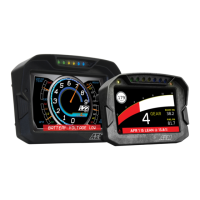42
· Gauge Background – Default background color of a gauge.
· Gauge Line – Default line color of a gauge used in drawing the outline.
· Gauge Fill – Default fill color of a gauge used in bars.
· Gauge Text – Default text color of a gauge.
Adding a Gauge
Once a screen page is open, it is possible to add gauges to the screen. To add a gauge:
· Select the gauge required from the Gauge menu or the tool bar.
· Click on the area of the screen the gauge is to be added to and whilst holding the mouse button down drag
a box to the size required for the gauge.
· On releasing the mouse button, the gauge will be added to the screen.
Most gauges can be added from the tool bar:
Selecting a Gauge
A gauge is selected using either the mouse or keyboard. To select a gauge using the mouse, move the cursor
over the gauge. If gauges are overlapping the topmost gauge is selected. Try moving the mouse to an area
where the gauge to select is not covered by another gauge. Alternatively, use the keyboard. To select a gauge
using the keyboard press the tab key repeatedly until the appropriate gauge is selected. When a gauge is
selected a border appears around it.
Moving a Gauge
A gauge can be moved using either the mouse or the edit window. To move a gauge using the mouse:
· Select the gauge with the mouse.
· When the cursor appears as a pointing hand click and drag the gauge to the required position.
To move a gauge using the edit window:
· Show the Gauge Property window by right clicking on the selected gauge or by selecting it from the Edit
menu.
· Change the values of the x position and y position properties to appropriate values.
This is particularly useful in aligning different gauges.
Resizing a Gauge
A gauge can be resized using either the mouse or the edit window. To resize a gauge using the mouse:
· Select the gauge with the mouse.

